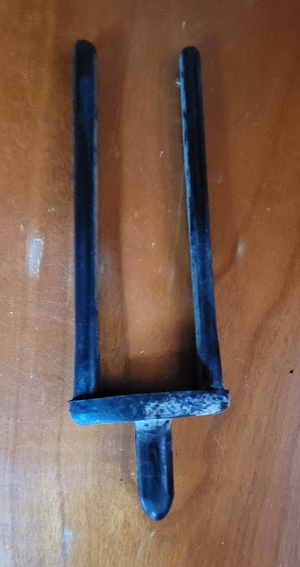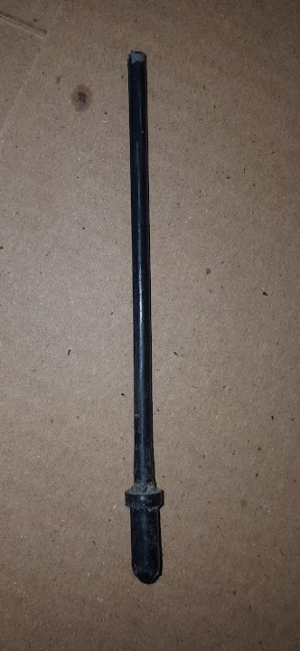The (hopefully) definitive word on sunroof operation and alignment. Combine with early posts in this thread on removal, install, and motor/drive.
A few people have posted about problems with their sunroofs not popping up in the back and I recently encountered the same thing putting the Polaris CSE back together so I thought I'd write up my findings. This is all for an electric version. Manual is identical in most respects.
The roof panel is held in place by two guide brackets in front that have a plastic-covered u-shaped slot that rides along the lower inner edge of the side rails.
The panel is further attached to the car by the brackets on the cables.
The gear on the motor (or crank) engages the ridges on both cables, pushing or pulling them in two different directions
When closing, the cables are pushed (pulled in a manual version) forward until they get close to the bump stops built into the car which protrude in the middle of the side rails. The first part of the sunroof assembly to encounter these bump stops are two little plastic wedges attached to the sunroof panel. These wedges hit the bump stop and slide upwards over the top of them, lifting the panel upwards. The front can't lift up, as the u-shaped glides keep it vertically fixed. But the rear can lift because the brackets on the cables are attached via hinges that can swivel upwards. Without these wedges the hinges will just ram up against the bump stops and jam, not lifting. See video. The wedges slip over tabs in the panel. If you need wedges, I have a CAD Step file so you can 3D print replacements. Just pm me.
The hinges on the cables ride up the bump stop, lifting the back of the panel until the panel is fully closed.
There are two rollers attached to pins sticking out of the cable brackets. These rollers fit along (above) spring steel tracks attached to the panel. (Normally they are black, I had to turn some new ones out of Delrin so the ones in the photo below are white.). Most of the time, the relationship of the roller to the panel is fixed (the brackets are bolted to the panel) but when the panel lifts at the hinges, this changes the distance between the cable (and pin/roller) and the bracket/panel. When lifted up there is pressure exerted on the metal springs against the rollers. When opening, the spring tracks pull the back of the panel down, allowing it to slip back below the roof.

So, if you are missing the plastic wedges, the panel may not close all the way and may not lift up. If you are missing the plastic rollers (or if the spring is incorrectly installed above the rollers), your panel may not drop properly in the back when opening. Note that if you just have the pin and not the roller it might work ok but you'll get a better drop with the roller as it increases the spring tension a tad. If you don't have the pins at all then it really has nothing to help it drop.
@Markos already posted a good video showing this in operation. Note that he has the pins but not the rollers. I think this was how the cables came originally so maybe the rollers are overkill.
Assuming all the parts are there, let's take a look at adjustment...
The adjustment points are:
- The cables can be pulled/pushed to adjust their length, based on where they engage with the motor (or crank) gear
- Front guide brackets are slotted for side to side adjustment
- Front guide bracket mounting points have threaded knurled barrels for front height and guide angle adjustment
- Cable mounting brackets have elongated holes, allowing for fine adjustment side to side and a bit fore/aft
- Cable hinges have serrated teeth and a screw for adjusting rear height
Start by adjusting the cable length to get them as even as possible. Remove the motor drive (or crank) and pull the cables until both are just touching the bump stops then install the gear. They may not be exactly the same but the small difference can be compensated for with cable brackets and the hinge height adjustment later.
Next, install the front guides. Turn the knurled adjustment barrels to a good guessing point but be sure to look at the angle of the bracket. Keep the height of the two barrels even enough that the guide engages evenly with the rails, not binding. Adjust the guides in their slots so that they securely hold the panel in place but don't rub too much against the rails. Place the metal clip on over the slot before inserting the screws so that the screws have a clean surface to tighten against. If you don't have the clips, use washers.

Swivel the metal springs out of the way and begin securing the cable brackets to the panel. You'll notice the elongated holes allow some adjustment. Most of the adjustment is side-to-side but there is a small amount of fore/aft tolerance also (in case you couldn't get the lengths exactly even earlier). Make sure the panel is square in the roof and attach each cable so that they naturally meet the panel. Use the metal plates between the brackets and the bolts. They slide under the metal tabs on the panel. If you don't have the plates, use washers. When done, swivel the metal spring back into place below the roller (or pin).
Now it is time to test. Adjust the front height when closed using the barrels. Adjust the rear height by sticking a screwdriver in between the panel and rails to loosen the toothed hinge adjuster. Lift or lower as required and tighten back up again. The photo below shows the adjustment teeth and how the hinges ride up over the bump stop.
That's about all there is to it. I found that improperly installed velvet weatherstrip "rope" can interfere. This guy does a decent job explaining how to install new seals at:
but you might need to tweak things a bit. I had to trim where the body seals turn down and enter the rear cavity. Also, this panel wasn't lifting at first, despite having everything in place. This was due to the corners being too tight for the panel to move all the way forward. We had to massage the velvet seal a bit to get it all working properly.



